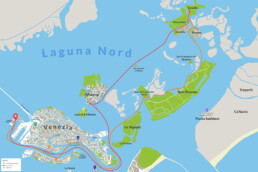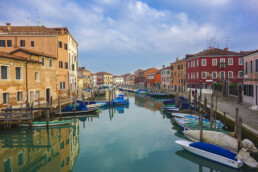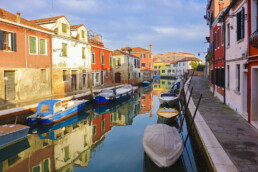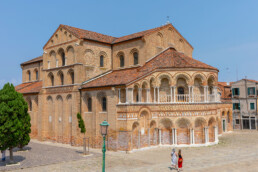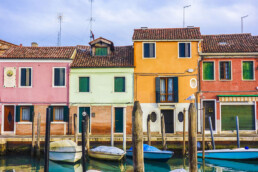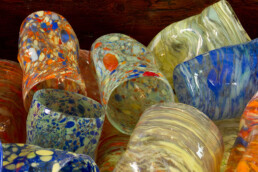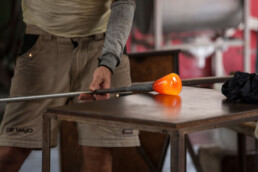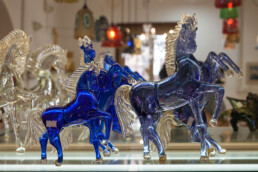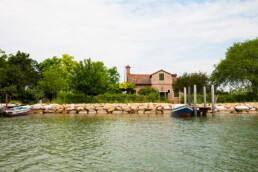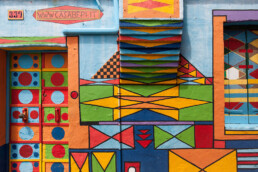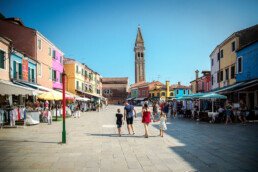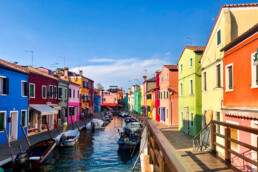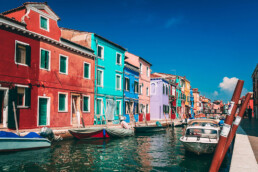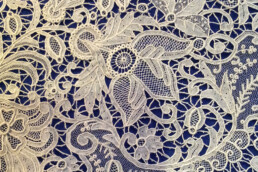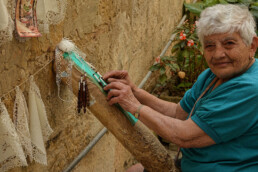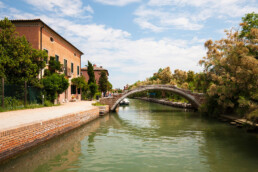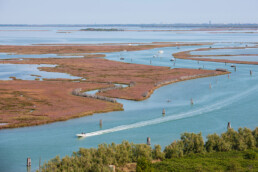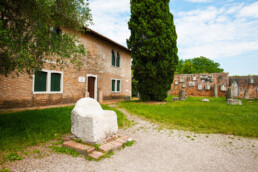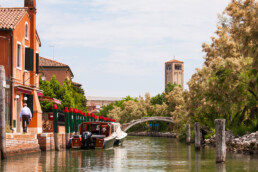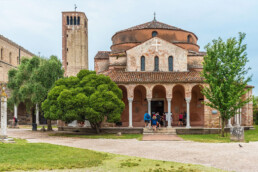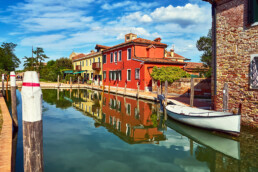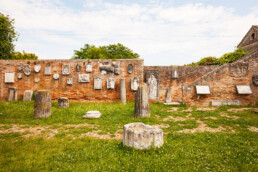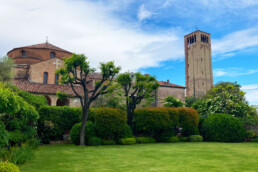Murano
Murano is one of the most famous islands of the Venetian Lagoon, and owes its fame to the skill with which its artisans still work glass.
To date, the origin of the Venetian glass industry is not clear, but one hypothesis connects it to the Venetians who, after learning the Roman techniques of glass processing in the mainland, returned to the Venetian islands and began to produce objects of various kinds.
In 1291, after a decree issued by the Great Council, all the furnaces present in Venice were moved to Murano, thus avoiding the constant risk of fire, which was frequent in a city like Venice. Murano is made up of 5 main islets, while the residential fabric is cut in two parts by a sinuous Grand Canal, crossed by a single bridge. The role of the island in the 1500s was mostly as a holiday destination for the aristocratic families of the time: for this reason it is impossible not to notice the alternation between the palaces of the merchant bourgeoisie and the more modest houses.
The twentieth-century style is most present in the internal construction of the island, while the exposed shores on the lagoon side are scattered with factories that are either still in use, disused and used as warehouses. Inside Murano it is possible to visit the Glass Museum, housed in a historic patrician residence that was the first seat of the municipality of Murano.
It hosts a rich collection of artefacts that were partly donated over the centuries by the master glassmakers of the Murano kilns, testifying to the ancient Venetian glass art.
Burano
The island of Burano is a tiny archipelago of the lagoon. Like Torcello, it was founded by the inhabitants of Altino, who had found in this area a refuge from the invasions of the Lombards, thus giving it the name of Porta Boranea.
There are many special features that you encounter when visiting Burano, one of the most evident being the colour of the residential buildings on the island. Various reasons are given for the bright colours of the facades. Some say that they were used by sailors during days of thick fog to recognise the edges of the city, others say it was for those had to return to their mooring and therefore recognise their home, while still others think it was so they people recognise the families in the city that had the same surname as them.
In addition to being famous for its chromatic vivacity, the island of Burano is also recognised for its great mastery in the lacework with a sewing needle: in fact, outside the homes you will find local ladies focussed on their craft. Burano is home to the Lace Museum, guardian of the secrets and history of this ancient process that made and still makes Burano famous all over the world.
The island’s gastronomic specialty is its golden biscuits, the “bussolà”: made up of butter, vanilla, corn flour and eggs, they can be in the shape of a donut or S. The symbol of Burano is its high bell tower, characterised with a steep slope. As in the other islands of the Venetian Lagoon, in Burano you can breathe an air of serenity and tranquility, thus giving those who visit it the opportunity to forget the hectic passing of time.
Torcello
Torcello is now an island with a mostly rural character. Its most flourishing period at the height of its splendour was from the seventh to the ninth century, when, after being founded by Bishop Mauro di Altino and his community, who were fleeing the Lombard assault in the Roman city of Altino, the island became an important and rich economic centre of the Venetian Lagoon.
Its port, the salt pans and its wool factories were of great renown at the time. After the eleventh century, Torcello was gradually abandoned due to the swamping of the lagoon and was used as a quarry for the buildings of Venice under construction. Upon arriving on the island, in addition to the famous Devil’s Bridge and the small dock, we will find the ancient Basilica of Santa Maria Assunta di Torcello, the remains of its baptistery and the church of S. Fosca.
Walking along its streets, we will also notice not only palaces such as that of the Archive and of the Council, but also curious finds relating to legends, such as the so-called “Attila’s throne”, a marble chair most likely used by the magistrates in charge of the administration of justice at the time.
Nature is the fascinating protagonist of the whole island, enveloping it in a silence and calm that appear almost timeless.
Request Information
To book a service or request a quote without any obligation, you can send us an email or fill out the following form.


